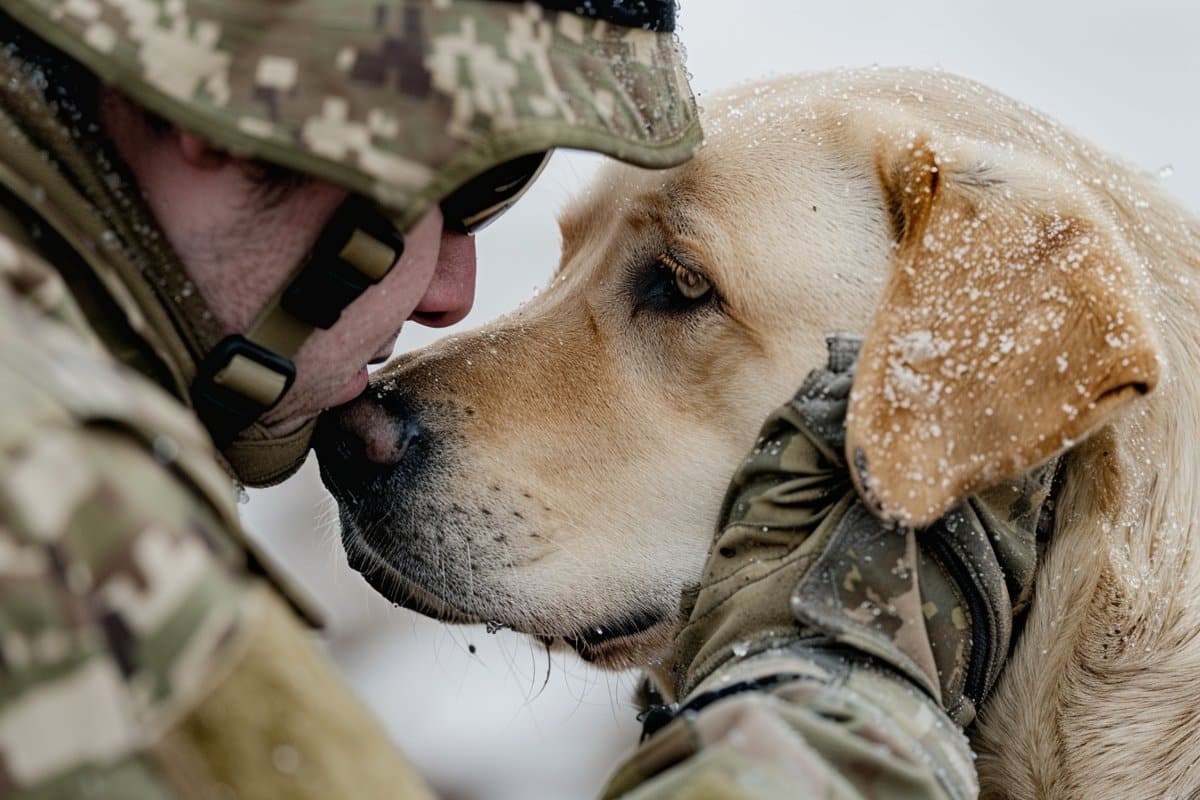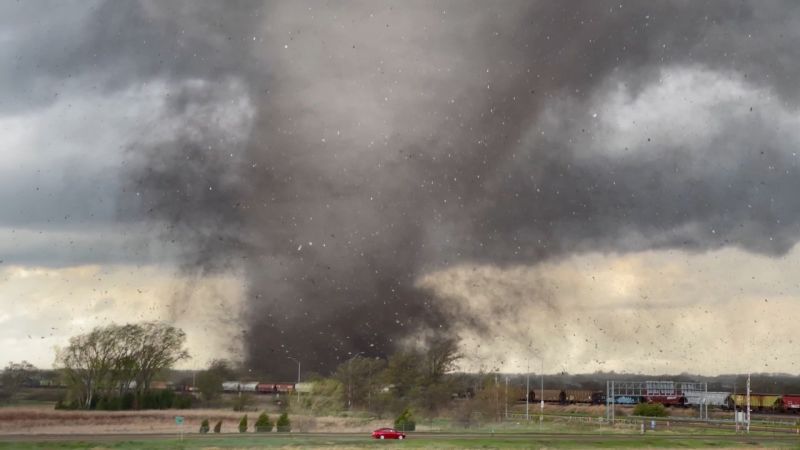Summary: Dogs can be trained to detect stress-related volatile organic compounds (VOCs) in human breath, potentially identifying the onset of PTSD flashbacks. This groundbreaking study utilized two dogs to distinguish between the breath of individuals recalling traumatic experiences and control samples, achieving over 70% accuracy.
This finding suggests that assistance dogs could offer earlier intervention during PTSD episodes by detecting specific stress markers, highlighting the potential for more effective PTSD management. The study also opens avenues for further research into the biochemical signals associated with PTSD symptoms and how dogs can be trained to respond to them.
Key Facts:
- Detection of Stress VOCs: Two dogs were trained to identify breath samples indicating stress with high accuracy, suggesting dogs can detect biochemical markers of PTSD in human breath.
- Potential for Early Intervention: This ability could enable assistance dogs to provide earlier support for individuals experiencing PTSD flashbacks, enhancing the effectiveness of their assistance.
- Future Research Directions: The study underscores the need for larger-scale research to validate these findings and explore the specific hormonal pathways dogs may be responding to in stressed breath samples.
Source: Frontiers
Dogs’ sensitive noses can detect the early warning signs of many potentially dangerous medical situations, like an impending seizure or sudden hypoglycemia.
Now, scientists have found evidence that assistance dogs might even be able to sniff out an oncoming PTSD flashback, by teaching two dogs to alert to the breath of people who have been reminded of traumas.
“PTSD service dogs are already trained to assist people during episodes of distress,” said Laura Kiiroja of Dalhousie University, first author of the paper in Frontiers in Allergy.
“However, dogs are currently trained to respond to behavioral and physical cues. Our study showed that at least some dogs can also detect these episodes via breath.”
Stressed humans smell
PTSD arises from exposure to a catastrophic event: symptoms include re-experiencing that catastrophic event, hyperarousal, avoiding any reminders, and cognitive or mood issues.
Among other forms of assistance, dogs can help patients by alerting to and interrupting episodes when their companions are struggling with their symptoms. If dogs could respond to stress markers on the breath, they could potentially interrupt episodes at an earlier stage, making their interventions more effective.
All humans have a ‘scent profile’ of volatile organic compounds (VOCs) — molecules emitted by the body in secretions like sweat — influenced by our genetics, age, activities, and other variables.
There is some evidence that dogs may be capable of detecting VOCs linked to human stress. However, no studies have investigated whether dogs could learn to detect VOCs associated with PTSD symptoms.
“This is a multidisciplinary collaboration between Dr Sherry Stewart’s clinical psychology lab and Dr Simon Gadbois’ canine olfaction lab, both at Dalhousie University,” said Kiiroja. “Neither lab could have done this work on their own. We brought together two distinct sets of expertise.”
Catching the scent
The scientists recruited 26 humans as scent donors. These participants were also taking part in a study about the reactions of people who have experienced trauma to reminders of that trauma; 54% met the diagnostic requirements for PTSD. To donate scents, they attended sessions where they were reminded of their trauma experiences while wearing different facemasks.
One facemask provided a calm breath sample that acted as the control, and another, which was worn while the participants recalled their trauma, provided a target breath sample. Participants also completed a questionnaire about their stress levels and their emotions.
In the meantime, the scientists recruited 25 pet dogs to train in scent-detection. Only two were skilled and motivated enough to complete the study: Ivy and Callie.
“Both Ivy and Callie found this work inherently motivating,” said Kiiroja. “Their limitless appetite for delicious treats was also an asset. In fact, it was much harder to convince them to take a break than to commence work. Callie in particular made sure there was no dilly-dallying.”
Ivy and Callie were trained to recognize the target odor from pieces of the facemasks, achieving 90% accuracy in discriminating between a stressed and a non-stressed sample.
They were then presented with a series of samples, one sample at a time, to see if they could still accurately detect the stress VOCs. In this second experiment, Ivy achieved 74% accuracy and Callie achieved 81% accuracy.
Humans’ best friend
Comparing Callie and Ivy’s successful identifications with the human participants’ self-reported emotions revealed that Ivy’s performance correlated with anxiety, whereas Callie’s correlated with shame.
“Although both dogs performed at very high accuracy, they seemed to have a slightly different idea of what they considered a ‘stressed’ breath sample,” said Kiiroja.
“We speculated that Ivy was attuned to sympathetic-adreno-medullar axis hormones (like adrenaline) and Callie was oriented to the hypothalamo-pituitary-adrenal axis hormones (like cortisol). This is important knowledge for training service dogs, as alerting to early-onset PTSD symptoms requires sensitivity to sympathetic-adreno-medullar axis hormones.”
Next, the team plans to carry out experiments to confirm the involvement of the sympathetic-adreno-medullar axis.
“With 40 sample sets, ours is a proof-of-concept study that needs to be validated by studies with larger sample sizes,” cautioned Kiiroja.
“In addition to enrolling more participants, validation studies should collect samples from a higher number of stressful events to confirm dogs’ ability to reliably detect stress VOCs in the breath of one human across different contexts.”
About this olfaction and PTSD research news
Author: Angharad Brewer Gillham
Source: Frontiers
Contact: Angharad Brewer Gillham – Frontiers
Image: The image is credited to Neuroscience News
Original Research: The findings will appear in Frontiers in Allergy

Rachel Carter is a health and wellness expert dedicated to helping readers lead healthier lives. With a background in nutrition, she offers evidence-based advice on fitness, nutrition, and mental well-being.




:max_bytes(150000):strip_icc()/The-Best-7-Day-Walking-Plan-for-Insulin-Resistance-8cf4c8a8c16e4dddac34d5d97633e91f.jpg)

/cdn.vox-cdn.com/uploads/chorus_asset/file/24402139/STK071_apple_K_Radtke_03.jpg)
